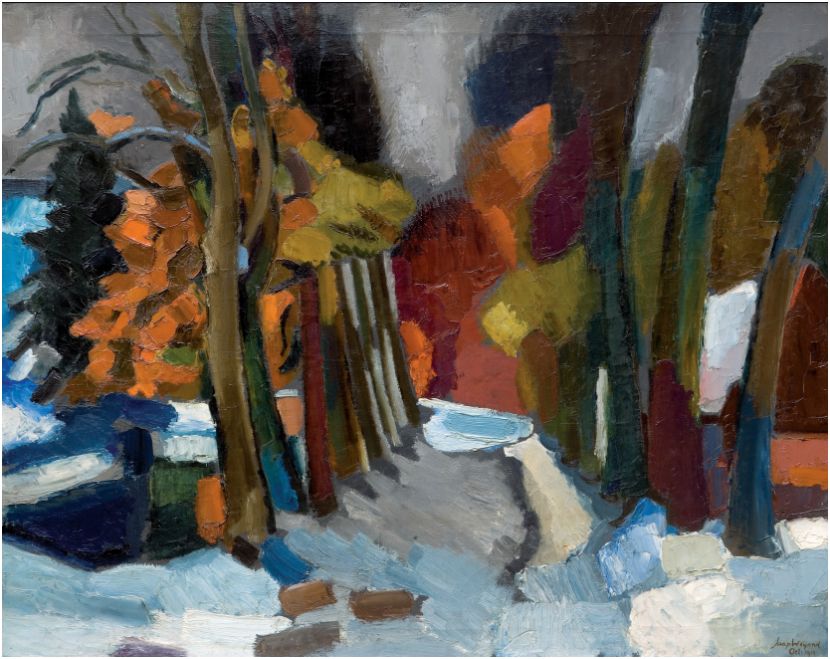Expressionism was an art movement that emerged at the beginning of the 20th century, between 1910 and 1930, and focused on expressing emotions and inner feelings through color, light and spontaneous forms. Where the impressionists worked from the outside in, expressionists worked from the inside out. As a founder you can refer to Van Gogh, Munch, Gauguin, Cezanne, Hodler and Ensor. The works of art do not show a realistic representation but an experience. Expressionism is therefore the sequel to Romanticism and Symbolism.
Dutch expressionism cannot be seen outside the international (French and German) context. In the Netherlands, expressionism gained a foothold between Amsterdam and Bergen. And a little later in the East, where Wiegers and Kirchner were at the cradle of a revolt within the Groningen artist group 'De Ploeg'.
Expressionism in the Netherlands was a complex and rather heterogeneous phenomenon. The adepts, who used the expressionistic formal language for a shorter or longer period of time, show both similarities and differences among themselves. Most Dutch artists continued to cling to visible reality as the starting point for their art. Influenced by Fauvism, German Expressionism, Cubism and Futurism, they each developed their own expressive style. You can say that the colors of the Bergen school were more muted.
Johan Thorn Prikker was perhaps the first true expressionist. He was a versatile artist who was active in various movements, including Symbolism and Expressionism. His later works showed a distinct expressionist style with flowing lines and intense colors. He was the first to abandon the naturalistic and impressionistic representation of reality and express emotion with paint.
In 1906, Jan Sluijters came under the spell of the Fauves, of which Derain and Matisse were the greatest 'savages'. Kees van Dongen also painted his first fauvist canvases in Paris. Mondrian in turn followed the simplification of form and color experiments of Sluijters. The influence of Cubism soon followed, which led to more powerful forms, including with Leo Gestel, while Lodewijk Schelfhout was mainly influenced by the analytical Cubism of Braque and Picasso.



The Netherlands remained neutral during the First World War, which caused many artists from the war countries to flee to us. Including the Flemish De Smet, Van den Berghe and later Rik Wouters (1916+) and Cantré. The Frenchman Le Fauconnier had a great influence on the painters in Bergen, whose landscapes in a usually quite dark color continued to be determined by Cubism.

The Flemish De Smet and Van den Berghe, brought into contact with the people of Bergen by Leo Gestel, almost immediately fell under the spell of Dutch expressionism. First they worked in Amsterdam, later they settled in the Gooi (Blaricum). A few years after the war they returned to Flanders and there (together with Permeke, who had acquired his expressionism in England, and Servaes, who had remained in Latem) they would become the tenors of Flemish expressionism.

After the war, the artist group 'De Ploeg' had been founded in Groningen around Wiegers, the Wiegman brothers and Dijkstra. Other main Team Members were Altink, Melgers and Werkman. They practiced their own form of expressionism and thus ensured the survival of a direction that was already disappearing elsewhere in the Netherlands. Their working method between 1923 and 1926 was especially important. Inspired by the former Brücke artist Kirchner, who was a personal friend of Wiegers, they painted their typical landscapes and (self-)portraits in deformed shapes and with bright contrasting colors.

Meanwhile, elsewhere in the Netherlands, individual figures such as the Haarlemmer Herman Kruyder, who painted emotional canvases full of fear and menace, and the Brabanders Hendrik Chabot and Hendrik Wiegersma, were working. In Chabot's life-size figures, angular and painted in simplified shapes, and in Wiegersma's canvases saturated with heavy colors, the influence of Gust de Smet and Frits Van den Berghe is noticeable, who would thus repay their 'toll' on Dutch art . The circle seems to be closed. Due to the 'exile' of these two and Cantré, Flemish Expressionism cannot be seen separately from Dutch Expressionism.
The 25 most important Dutch expressionists:
- Jan Altink De Ploeg
- Else Berg Bergen
- Hendrik Chabot
- Arnout Colnot Bergen
- Kees van Dongen
- Johan Dijkstra De Ploeg
- Leo Gestel Bergen
- Jacoba van Heemskerck
- Hildo Krop
- Willem de Kooning
- Herman Kruyder
- Adriaan Lubbers
- Henk Melgers De Ploeg
- Piet Mondriaan
- Johan Thorn Prikker
- John Rädecker
- Leo Schatz
- Lodewijk Schelfhout
- Mommie Schwarz Bergen
- Jan Sluijters
- Charley Toorop Bergen
- Hendrik Werkman De Ploeg
- Jan Wiegers De Ploeg
- Hendrik Wiegersma De Ploeg
- Piet van Wijngaerdt Bergen
